The midnight of August 15, 1947 is perhaps noted as the most significant in the pages of Indian history. In the words of Jawaharlal Nehru, India awoke to life and freedom. But if freedom is the hard earned dream come true for the nationalist leaders of India, then stitching together the hundreds of territorial pieces into a distinct whole was an aspiration much harder to realize and as of August 15, lay yet unfulfilled. The departure of the British from Indian territory was accompanied by the question of how to bring together the 500-odd chiefdoms and states they had left behind.
The princely states, both pampered and exploited by the British, maintained a position of semi-autonomy under the colonizers and were the toughest challenge facing free India. Remarking upon the complicated relationship between the princes and the British, historian Barbara Ramusack notes “British colonial officials had claimed them as faithful military allies, denounced them as autocrats, praised them as natural leaders of their subjects, chided them as profligate playboys, and taken advantage of their lavish hospitality.” For the British these states were the necessary allies, to keep in check the rise of their common enemy, the French. Accordingly, the princes were given autonomy over their territories, but the British acquired for themselves the right to appoint ministers and get military support as and when required.
Once the withdrawal of the British was announced, the issue of the princely states had to be settled for the new government that would be in power. By the late 1930s itself, the Congress had made clear their intention of integrating the states into the Indian union. In the 1938 Haripura session of the Congress, the objective was made clear in the following words:
“The Congress stands for the same political, social and economic freedom in the States as in the rest of India and considers the States as integral parts of India which cannot be separated. The Purna Swaraj or complete independence, which is the objective of the Congress, is for the whole of India, inclusive of the States, for the integrity and unity of India must be maintained in freedom as it has been maintained in subjection.”
To aid in the process a new states department was set up with Sardar Vallabhbhai Patel as its head and V. P. Menon as the secretary. Together they, under the guidance of Lord Mountbatten, were given the responsibility to coax, cajole and convince the princes to accede to the Indian union. Bikaner, Baroda and few other states from Rajasthan were the first ones to join the union. Alternatively, there were several other states that were adamant to not shake hands with India. Some of them thought this to be the best moment to acquire independent statehood, while there were others who wanted to become a part of Pakistan. Here are the cases of five states that opposed the idea of joining India.
Travancore
The southern Indian maritime state was one of the first princely states to refuse accession to the Indian union and question the Congress’ leadership of the nation. The state was strategically placed for maritime trade and was rich in both human and mineral resources.
Sir C. P. Ramamswamy Aiyar, the dewan of Travancore and a distinguished lawyer by profession, had by 1946 declared his intention of forming an independent state of Travancore that would be open to the idea of signing a treaty with the Indian union. Historian Ramachandra Guha notes that Travancore’s bid to independence was in fact propelled by Mohammed Ali Jinnah. Sir C.P. Aiyar is also said to have had secret ties with the UK government who were in support of an independent Travancore in the hope that they would get exclusive access to a mineral called monazite that the area was rich in, and would give an edge to Britain in the nuclear arms race. While the Dewan stuck to his position till as late as July 1947, he changed his mind soon after he survived an assassination attempt by a member of the Kerala Socialist Party. On July 30 1947, Travancore joined India.
Jodhpur
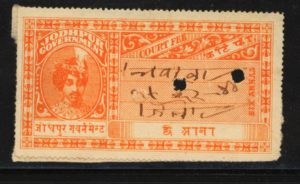
The Rajput princely state of Jodhpur was a strange case of tilting towards Pakistan despite having a Hindu king and a large Hindu population. While the prince,
Maharaja Hanvant Singh, was strong in his willingness to join India, he somehow got the idea that it might be more beneficial for him to join Pakistan on account of the fact that his state shared border with the soon to be born country. Further, he was lured into joining Pakistan by Jinnah who offered him full port facilities in Karachi along with military and agrarian support. However, when Vallabhbhai Patel was made aware of the possibility of Jodhpur going to Pakistan, he immediately contacted the prince and offered him sufficient benefits and explained to him the problems of joining a Muslim state. Eventually the Jodhpur prince was won back. Historian Ramchandra Guha, in his work “India after Gandhi”, notes that on being presented with the Instrument of Accession, the Jodhpur prince dramatically took out a revolver and held it on the secretary’s head saying, “I will not accept your dictation”. However, few minutes later he calmed down and signed the document.
Bhopal
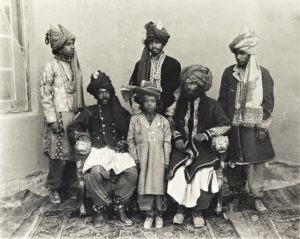
Another state that wished to declare independence was Bhopal, which had a Muslim Nawab, Hamidullah Khan, ruling over a majority Hindu population. A close friend of the Muslim League, the Nawab was staunchly opposed to Congress rule. He had made clear his decision to attain independence to Mountbatten. However, the latter wrote back to him stating that “no ruler could run away from the dominion closest to him”. By July 1947, the prince became aware of the large number of princes who had acceded to India and decided to follow suit.
Hyderabad
The case of Hyderabad was by far the most significant and complicated challenge among the princely states. Lying in the Deccan plateau, the state covered a large portion of the centre of India. During the independence of the country, Nizam Mir Usman Ali was presiding over a largely Hindu population. When the British decided to leave, the Nizam was very clear on his demand for an independent state and consequently becoming a member of the British commonwealth of nations. Lord Mountbatten, however, made it very clear that the Crown would not agree to Hyderabad becoming member of the British commonwealth, except through either of the two new dominions.
While the tussle over Hyderabad grew stronger over time, violence and demonstrations across the state became a regular feature. The Nizam also drew support from Jinnah who pledged to defend the oldest Muslim dynasty in India. For Patel, however, an independent Hyderabad was equivalent to having cancer in the belly of India.
Once Lord Mountbatten resigned in June 1948, the Congress government decided to make a more decisive turn. On September 13, Indian troops were sent to Hyderabad in what came to be known as ‘Operation Polo’. In an armed encounter that lasted for about four days, the Indian army gained full control of the state. Later, in an attempt to reward the Nizam for his submission, he was made the governor of the state of Hyderabad.
Junagadh
Apart from Hyderabad, there was one more state that had not acceded to the Indian union by August 15, 1947, the Gujarati state of Junagadh. Junagadh was the most important among the group of Kathiawar states. Here too, the Nawab, Muhammad Mahabat Khanji III ruled over a large Hindu population. However, when on July 25, 1947 Lord Mountbatten addressed the princes, the Dewan of Junagadh had made very clear his decision to advise the Nawab on joining the Indian union.
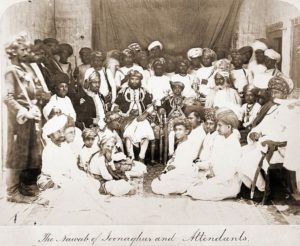
Junagadh was the most important among the group of Kathiawar states. Here too, the Nawab, Muhammad Mahabat Khanji III ruled over a large Hindu population. (WikimediaCommons)
In early 1947, the Dewan of Junagadh, Nabi Baksh invited Sir Shah Nawaz Bhutto of the Muslim league to join the state council of minister. In the absence of the existing dewan, Bhutto took over the office and pressed the Nawab to accede to Pakistan. When Pakistan accepted Junagadh’s request for accession, the Indian leaders were enraged as it went against Jinnah’s two nation theory.
The disturbed situation in Junagadh led to a complete breakdown of the economy and consequently the Nawab fled to Karachi. Vallabhbhai Patel requested Pakistan to allow a plebiscite in Junagadh and eventually sent in troops to force annexation of three of its principalities. In the face of acute shortage of funds and forces, the Dewan was forced to accede to the Indian government. Eventually, on February 20, 1948, a plebiscite was held in the state wherein 91 percent of the voters chose to join India.
Source:Indian Express

Readers like you, make ESHADOOT work possible. We need your support to deliver quality and positive news about India and Indian diaspora - and to keep it open for everyone. Your support is essential to continue our efforts. Every contribution, however big or small, is so valuable for our future.

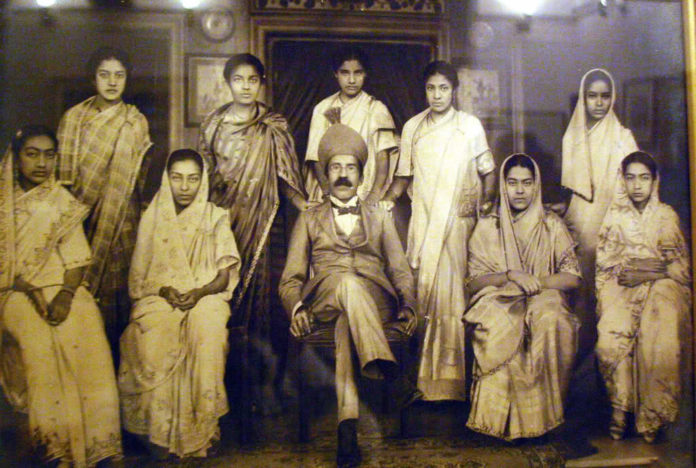




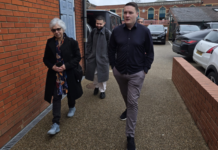





a good piece of history, it was never an easy task to tame rulers of small states in India.
Hats off to sardar vallabhai patel.
bnbhanot
I have also studied the diary & books on the partition of India & I, 2nd Above statements , specially about JODHPUR whose HINDU MAHARAJA had taken OUT HIS PERSONAL REVOLVER TO SHOOT MR.V.P.MENON, EMISSARY / SECRETARY OF OUR MOST LOVEABLE & VISIONARY HOME MINISTER , SARDAR VALLABH BHAI PATEL. MAHARAJA OF JODHPUR WAS CALMED DOWN BY MR . V.P.MENON BY HIS ABILITY TO CONVINCE THAT HINDU MAHARAJA IN FAVOUR OF OUR BHARATVARSH WITH HIS GREAT ACUMEN & DIPLOMACY AS WELL AS SAVE HIMSELF FROM MAHARAJA’S HANDS .
I CD ALSO WRITE ALL THESE FACTS & SECOND THE FACTS , SPECIALLY ON BHOPAL & HYDRABAD & VARIOUS OTHER STATES IN CENTRAL INDIA. IT WAS HERCULEAN TASK TO CONVINCE ABOUT 569 PRINCELY STATES OF INDIA TO MERGE WITH US , SPECIALLY TO CONVINCE MUSLIM PRINCELY RULERS WHO CALLED THEMSELVES AS “NAWABS”.
Those who may be interested in knowing the true story of the partition of India , may kindly visit our library at TEEN MURTY MARG , NEW DELHI. ( EARLIER RESIDENCE OF OUR FIRST PRIME MINISTER, JAWAHAR LAL NEHRU) .
SCGUPTA, MUMBAI, 9820587609; EMAIL:jhansi1931@gmail.com
Partition of India is a creation of Jinah and Nahru. Both were selfish to rule the country. People suffered but innocent people of India and Pakistan still made them as their leaders. Now at least wake up and ask for your better living than supporting your present leaders.